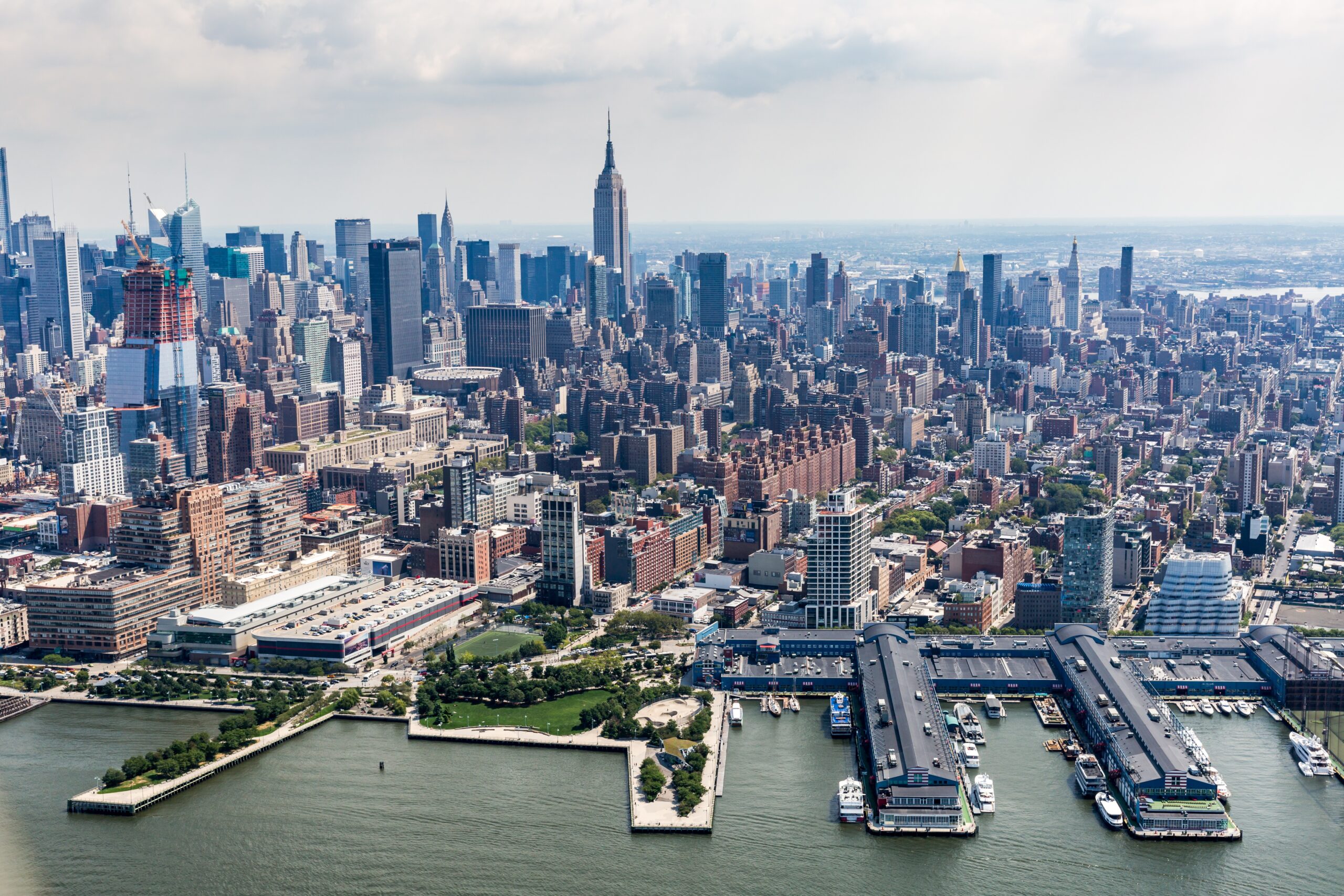By Abel López / Footprint Zero
Apr 25, 2024, 11:40 AM EDT
New York City faces gradual subsidence, according to a study published in Advancing Earth and Spaces Sciences, with an estimated rate of 1 to 2 millimeters. Although this phenomenon does not represent an immediate risk, it is crucial to address it. Considering sea level rise due to climate change, there is concern that these two problems combined could lead to more severe flooding in the future. In addition, the city will become more susceptible to the impact of natural phenomena.
According to data collected by the BBC, one of the causes of this collapse is a characteristic that makes New York unique: its large skyscrapers. The concrete, steel and glass of the buildings alone represent a weight of 762 million tons (1.68 trillion pounds), according to data from the United States Geological Survey (USGS).
New York has 1,084,954 buildings in its 777 square kilometers. It is rich in cultural diversity, parks and is famous for its architecture, and also has a population of more than 8 million people.
Thinking about a subsidence of one millimeter per year seems like a small number, but it is fast enough to threaten infrastructure, crops and wetlands. This was concluded by recent research based on Virginia Tech’s Earth Observation and Innovation Laboratory, which took into account the East Coast and noted that sinking also occurs in other coastal areas such as Baltimore, Maryland, and Norfolk, Virginia.
In that study, initially published in PNAS Nexus and reviewed by CBS News, information from satellites and GPS sensors was used. It was confirmed that between 2007 and 2020 the area under the infrastructure of the aforementioned cities sank by 1 to 2 millimeters per year on average.
The area around and within New York City is also sinking for a second reason: the surface has a continuous movement (up and down) that is recorded due to the disappearance of the glaciers whose weight it supported in the last ice age , about 16,000 years ago.
Although these huge blocks of ice disappeared, the effects on the land remain. That continuous movement in land is known as glacial isostatic adjustment, according to the National Ocean Service, and it occurs in the Mid-Atlantic region.
Leonard Ohenhen, a geophysicist at Virginia Tech, said land subsidence is seriously damaging and, he believes, has been overlooked. Experts warn of damage to homes, salt water infiltration into farms and bodies of fresh water.
Previous, global research by four U.S. Geological Survey (USGS) scientists found that land is sinking faster than sea levels are rising in many coastal cities, not just in the U.S. also in other parts of the world.
In the case of much of New York City, this subsidence can reach up to 4 millimeters per year. Additionally, sea level is expected to rise between 8 and 30 inches by 2050, according to the study that was led by research geophysicist Tom Parsons along with Pei-Chin Wu, Meng (Matt) Wei and Steven D’Hondt. experts in Oceanography from the University of Rhode Island.
“The combination of tectonic and anthropogenic subsidence, rising sea levels and increasing intensity of hurricanes implies an increasingly accelerated problem in coastal and riverine areas. “Repeated exposure of building foundations to salt water can corrode reinforcing steel and chemically weaken concrete, leading to structural weakening,” experts warned.
A BBC Mundo report states that the possible solutions change depending on the local causes of the sinking. One proposal may be to stop new construction. Additionally, checking that larger buildings are placed on a more solid rock foundation could help reduce subsidence.
In some areas another response may be to reduce groundwater extraction and the exploitation of underground aquifers: something that rather increases with increasing urbanization. It is key to know how to meet water needs sustainably. In cities like Tokyo, for example, they have also had an approach of building physical structures, including concrete dikes, seawalls, water pumping stations and flood gates.
